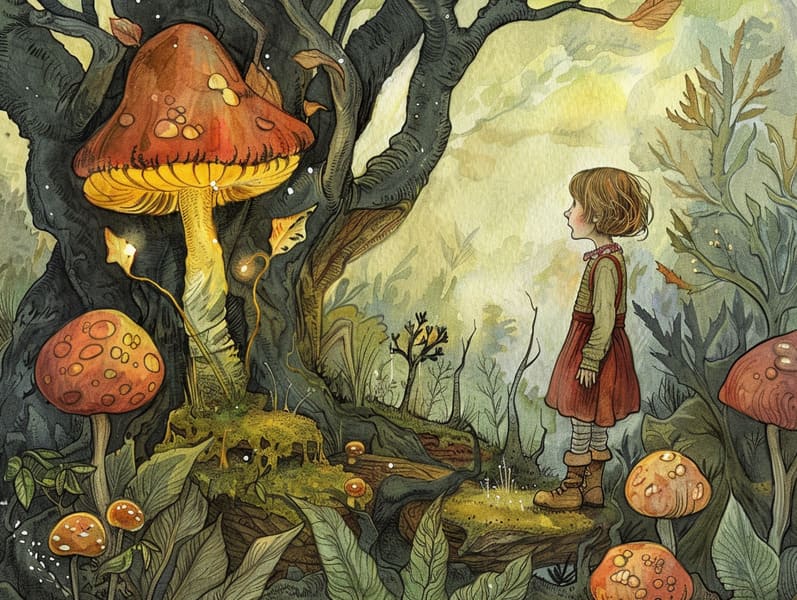A Brief History of Children's Fairy Tales with the Enduring Captivation.
A Brief History of Children's Fairy Tales with the Enduring Captivation.
Blog Article

Short fairy tales have enduring presence. These tales have been shared from one generation to the next far before they were ever published. They arose from a variety of civilizations, including Western traditions. They were initially passed along among elders, often carrying themes and messages related to the societal norms and beliefs of the time.
The renowned Brothers Grimm, Jacob and Wilhelm, were among the first to gather many of these beloved stories. Their collection, "Grimm's Folk Tales," included tales like "Cinderella," "The Story of Hansel and Gretel," and "Snow White," which have since become classics in the world of children's fairy tales. Similarly, Hans Andersen's charming narratives, such as "The Mermaid's Tale," and "The Duckling that Could," have won hearts worldwide, securing their place in the pantheon of treasured fairy tales.
Despite being ancient, classic fairy tales remain as significant as ever, especially as kids' bedtime tales. These enchanting tales are now available in many formats, including artistically illustrated books, delightful animations, and web-based fairy tales.
Their lasting presence can be linked to several captivating elements:
Key Lessons: Timeless fairy tales often present important moral lessons. Stories like "The Boy Who Cried Wolf" teach the value of honesty, while "The Tortoise and the Hare" emphasize the values of resolve and unpretentiousness. These stories offer little ones clear distinctions between truth and falsehood, forming their moral compass in a subtle yet significant way.
Kindness and Comprehension: Traditional fairy tales frequently portray heroines facing struggles and tests, fostering young readers to relate with their struggles and support their triumphs. For instance, "Beauty's Beast" illustrates the necessity of looking beyond appearances to appreciate the real person of a person, promoting insight and understanding.
Cultural Insights: Many fairy tales are infused with the cultural contexts from which they bloomed. Exploring these narratives can provide enlightening views into different ways of life, strengthening a sense of cultural respect and respect.
Imagination and Creativity: The fantastical elements in timeless fairy tales—enchanted lands—activate children’s innovations. These fairy tales move readers to imaginary realms, inspiring fantasy ideas and a sense of awe that remains a lifetime.
Traditional fairy tales are not only spellbinding but also illuminating. They function as captivating tools in advancing various mental and emotional abilities in the young. When fairy tales are recited, they nurture language development by introducing new language items and sophisticated sentence structures. This practice also strengthens auditory skills and mental awesome site focus, as the young focus on every detail, eager to see what happens next.
Furthermore, talking about the themes and characters of fairy tales can promote thinking skills and thinking skills. Young readers are taught to identify patterns, guess what will happen, and figure out cause and effect. These analyses also further kids convey their thoughts and feelings, strengthening their emotional intelligence.
In today’s digital era, the availability of online fairy tales has made these stories more accessible than ever. Internet sites and web apps share broad selections of bedtime fairy tales that can be enjoyed or played anytime, anywhere. Fairy tales voiced are particularly favored, offering an interactive way for young readers to enjoy these mesmerizing stories. Audio stories and read-to-me videos transport characters and settings to life, often complemented by delightful music and soundtracks that enhance the story adventure.
The timeless allure of timeless fairy tales lies in their ability to modify to today's society while staying true to their main lessons. Contemporary versions of these tales often showcase more inclusive protagonists and modern settings, making them pertinent to today’s audience. However, the key lessons of spirit, goodness, and integrity remain unchanged, continuing to touch children of all ages.
Ancient fairy tales also offer a sense of ease and closeness. They bring a coherent narrative with a apparent beginning, middle, and end, often closing with the finalization of conflicts and the triumph of right over wrong. This regularity can be comforting for kids, affording a sense of invariability in an variable world.
Traditional fairy tales continue to enthrall and teach new generations, maintaining their grandeur and meaningfulness in modern society. As kids' bedtime tales, they make available a perfect blend of charm and understanding, furthering moral values, empathy, and creativity. The availability of web-based fairy tales and the widespread nature of fairy tales voiced ratify that these timeless stories remain reachable to new generations.
By sustaining and telling these stories, we continue to laud the rich tapestry of folklore and cultural heritage. Whether you are viewing a artistically illustrated book, seeing a electronic collection, or listening via an voice book, the fascination of ancient fairy tales is always within reach. These tales remind us of the endless nature of fairy tales and its ability to bind us across eras and regions.
If you are perusing a artistically illustrated book, browsing a web-based library, or listening via an narrated book, the magic of Grimm's fairy tales is always within reach.
These tales remind us of the perpetual strength of fairy tales and its ability to unify us across epochs and places, establishing a link that fascinates and enlightens alike.